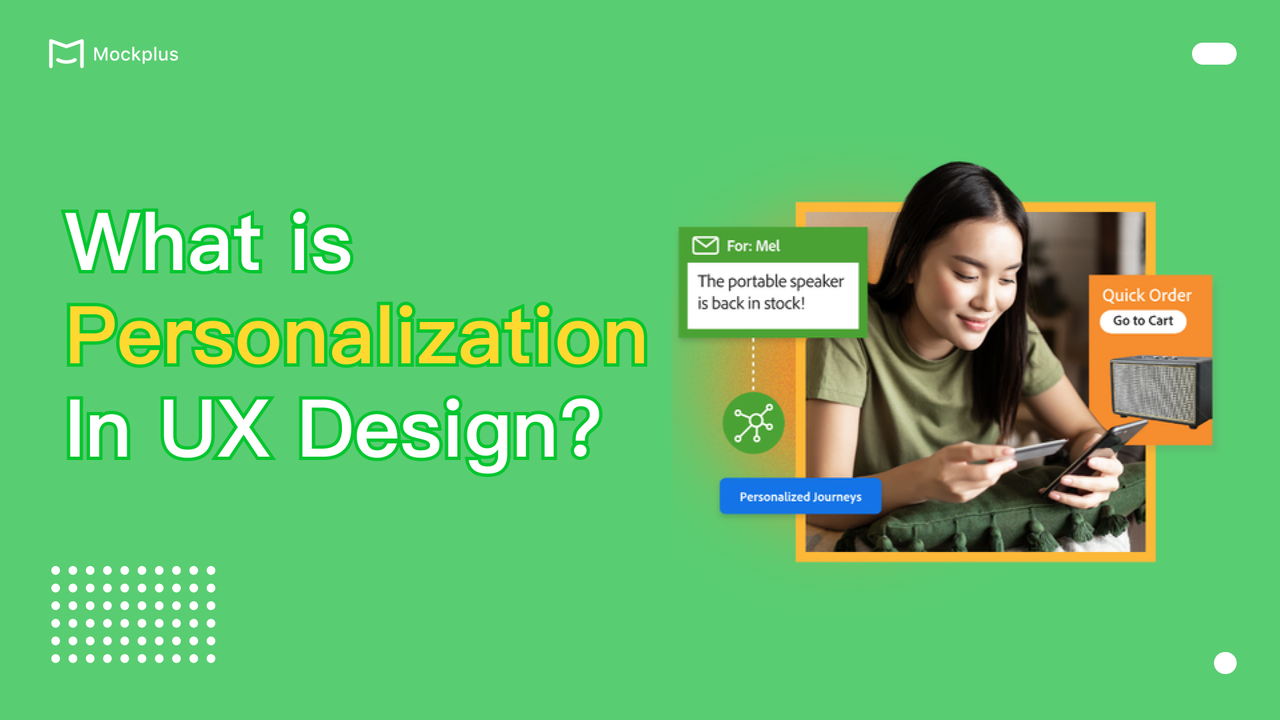 To create truly unforgettable experiences, distinguishing yourself through unique, tailored services is essential. Users appreciate it when their preferences are acknowledged and their expectations met, leading to a remarkable customer experience. This is where personalization plays a vital role. It fosters empathy, builds trust, and cultivates loyalty, all of which contribute to a powerful and successful business.
To create truly unforgettable experiences, distinguishing yourself through unique, tailored services is essential. Users appreciate it when their preferences are acknowledged and their expectations met, leading to a remarkable customer experience. This is where personalization plays a vital role. It fosters empathy, builds trust, and cultivates loyalty, all of which contribute to a powerful and successful business.
In this article, we will explain the concept of personalization in UX design, exploring its significance and how it differs from customization. We'll also provide the best practices of personalization design and much more. By the end of this exploration, you'll have a comprehensive understanding of how to leverage personalization to elevate your design projects.
The evolution of user experience design has undergone significant changes over time, influenced by technological advancements and shifting consumer expectations. Initially, the landscape was dominated by a “one-to-all” experience model, which provided a uniform experience for everyone due to the constraints of technology.
As businesses began to recognize the diverse needs within their customer base, this approach evolved into a “one-to-many” experience model. This shift allowed for segmentation, where customers were categorized into groups to receive tailored experiences.
With the continuous advancement of technology and the emergence of sophisticated tools and applications, the paradigm has now shifted towards a “one-to-one” experience or “personalization” experiecne. It is a strategic approach that businesses using technologies such as data analytics, artificial intelligence, deep and machine learning to tailor customer journeys and experiences to individual preferences and needs.
This evolution underscores the importance of understanding customer needs and the potential of personalization in enhancing user satisfaction and loyalty. As marketing expert Avi Dan aptly states, “Personalization is not a trend; it’s a marketing tsunami.” It not only meets customer expectations but also fosters loyalty, making it an essential component for any business aiming to thrive in today’s competitive landscape.
What personalized UX design can offer goes well beyond simply improving user experience. Companies that prioritize personalization often witness notable enhancements in various aspects. Here are some key aspects where personalization shows its magic:
In summary, the advantages of personalization are numerous and impactful, driving both customer satisfaction and business success.
Customization empowers users to tailor their online experiences according to their personal preferences. This process allows individuals to make changes to their interactions on a website, such as adjusting settings, selecting themes, or choosing content types. Each user can craft a unique experience that reflects their specific likes and dislikes, ensuring that their visits are personally relevant and engaging.
In contrast, personalization involves creating customized experiences based on user characteristics and behaviors, all managed by the business. Instead of allowing users to make adjustments, personalization relies on data analytics to understand visitor segments, such as demographics, browsing history, and location. This strategy enables companies to deliver targeted messages, offers, and content to different user groups, enhancing relevance and engagement. For instance, a website might display different promotions based on a user's location or previous interactions, ensuring that the content resonates with their unique context.
While both strategies aim to improve user satisfaction, the key difference lies in control. Customization places the power in the hands of the user, allowing them to shape their experiences, while personalization is a proactive approach where businesses curate experiences based on user data and behavior.
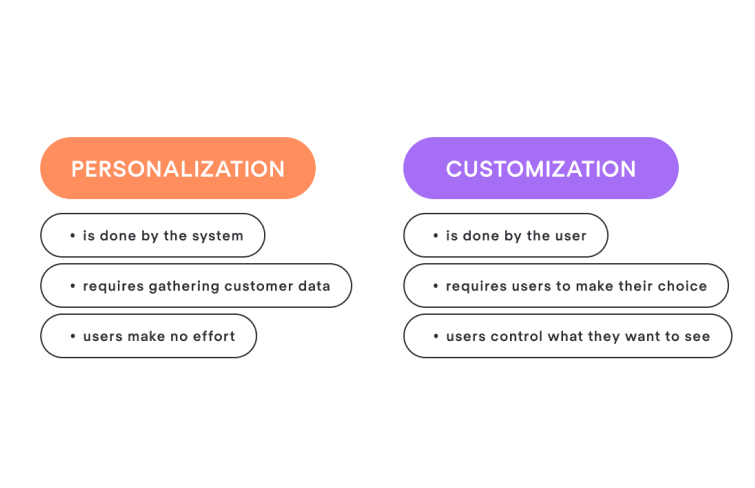
Effective personalization can significantly enhance user experiences by delivering the right information to the right audience at the right moment. However, mislabeling a user can lead to frustration and even drive them away from the platform altogether. Personalization relies on educated guesses derived from data analysis, but user behavior can be unpredictable, and past actions don’t always indicate future interests.
For instance, if a customer purchases a book about Web design, it doesn't necessarily mean they are primarily interested in technology; they could have bought it for a course, work, or as a gift. If the system overly focuses on this single action, it may incorrectly categorize the user as solely a “tech enthusiast,” ignoring their broader interests like pop music, crossword puzzles, or historical dramas.
A highly effective strategy for uncovering personalization opportunities is to directly ask your users with targeted questions. For instance, when welcoming visitors from Instagram, you might prompt them with a friendly inquiry: "Welcome! What are you looking for today?" It not only shows that you value their presence but also encourages them to share their preferences. By understanding their needs right from the start, you can tailor their experience more effectively, ensuring that the content, products, or services presented align closely with their interests.
Delivering the right message at the optimal moment is crucial for effective personalization. The goal is to engage visitors without overwhelming them, so finding the perfect balance is essential. It's important not to bombard users with excessive personalized content or, conversely, to leave them wanting more. To achieve this balance, consider using a mix of embedded content and overlays rather than relying solely on frequent pop-ups, which can disrupt the user experience. By carefully timing your messages and ensuring they appear when users are most receptive, you can create a seamless interaction that enhances engagement without detracting from the overall experience.
Personalization should not be limited to content alone; it can also enhance functionality to create a more seamless user experience. For instance, if a user consistently logs 100% of their time on administrative tasks in their weekly timesheet, prioritize that option in the selection menu. By anticipating user needs in this way, you not only save them time but also demonstrate an understanding of their habits and preferences.
Despite careful planning, even the most sophisticated systems can encounter issues. To give users control over their experience, many sites now include options that allow them to "opt-out" or revert to a standard interface. This feature empowers users to disengage from personalized content if they find it overwhelming or irrelevant. Additionally, it fosters trust, encouraging users to engage more confidently with the platform, knowing they can easily return to a comfortable setting.
Amazon operates as a vast marketplace with thousands of products, which can make it quite challenging for users to find a product that they like. To tackle this, Amazon employs dynamic personalization techniques that present users with items tailored to their interests. The platform crafts a customized homepage that reflects your past purchases and items saved in your wishlist. It also scrutinizes your recent search activity to enhance recommendations. For instance, if a user frequently browses Nintendo Switch games or has previously purchased several titles, Amazon will suggest additional Switch games or newly released titles to explore.
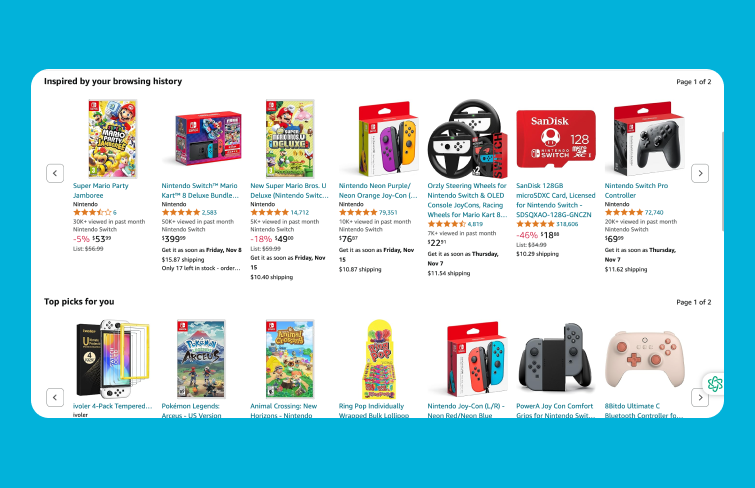
Netflix stands out as the premier app for delivering personalized mobile experiences and layered recommendations. On its homepage, Netflix implements several strategies for customization.
Firstly, Netflix curates a personalized watchlist based on your viewing history, including shows you’ve enjoyed, those you've saved for later, and even those you’ve rated. Additionally, the "Because you watched..." section acknowledges your viewing habits, ensuring that the platform doesn't overlook your preferences. By meticulously analyzing data from millions of users, Netflix tailors recommendations to introduce you to new shows that align with your unique tastes.
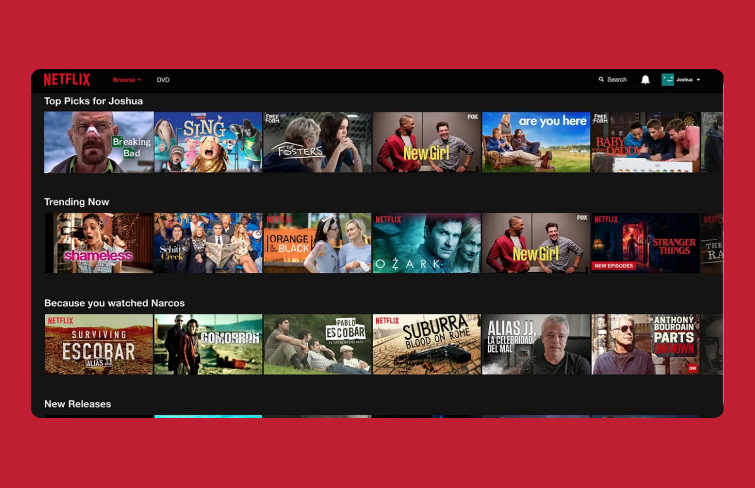
Spotify has revolutionized music personalization with its standout feature, Spotify Wrapped. Launched at the end of each year, it provides users with a tailored summary of their listening habits, including total listening time, favorite tracks, and top artists. What sets Wrapped apart is the heartfelt personal messages from over 40,000 artists, including icons like Taylor Swift and Billie Eilish, thanking fans for their support. This unique blend of data and emotional connection has created a viral sensation, sparking conversations across social media platforms as millions of users proudly share their personalized insights. Its success exemplifies the power of personalization in transforming a brand into a cultural phenomenon, making it one of Spotify’s most strategic and celebrated initiatives.
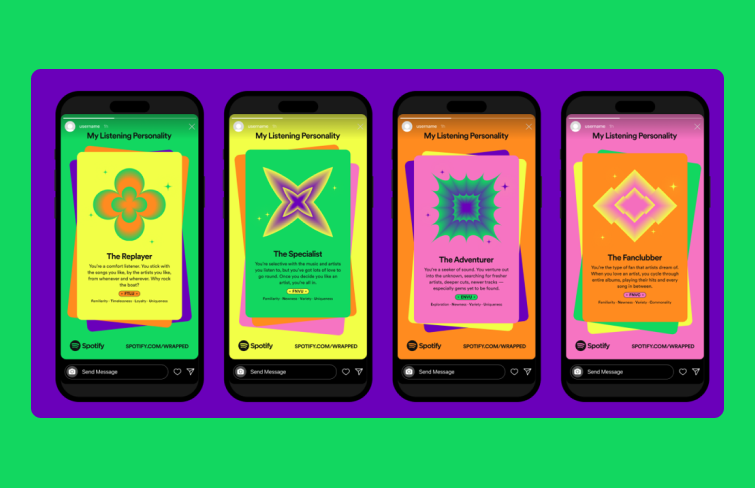
Similar to Netflix and Spotify, YouTube excels in delivering personalized content recommendations. The platform’s algorithm is driven by a user's activity, including past searches, viewed videos, liked content, watchlisted items, and subscribed channels. This wealth of data enables YouTube to create tailored categories that resonate with individual interests and preferences, ensuring that users discover videos that engage and entertain them. By continuously learning from user behavior, YouTube refines its suggestions, making the viewing experience more relevant and enjoyable for each user.
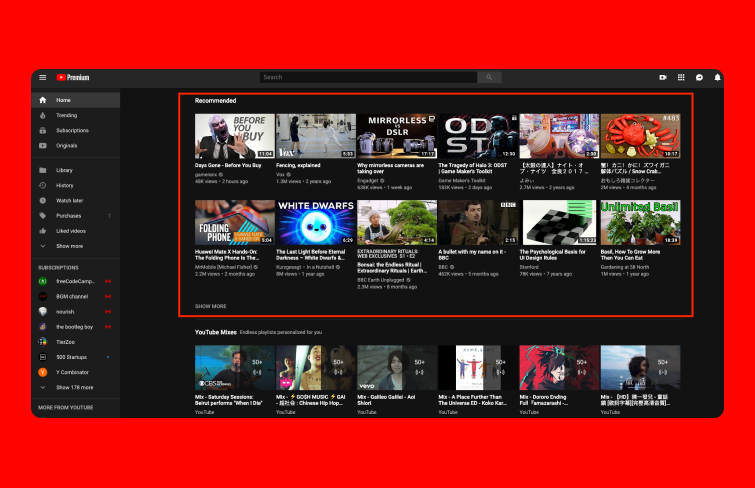
Google Play Books effectively enhances user experience through targeted discounts and promotions. When an item on a customer’s wishlist experiences a price drop, the platform promptly sends an email and a mobile push notification to alert the user. It exemplifies personalization, as recommendations are tailored to items the customer has already expressed interest in. By highlighting products that indicate a clear buying intent, Google Play Books significantly increases the chances of conversion. This strategy is particularly successful because it offers relevant discounts, making it more likely that users will complete their purchases. Additionally, by addressing price-sensitive customers, it minimizes financial barriers, fostering a smoother buying journey.
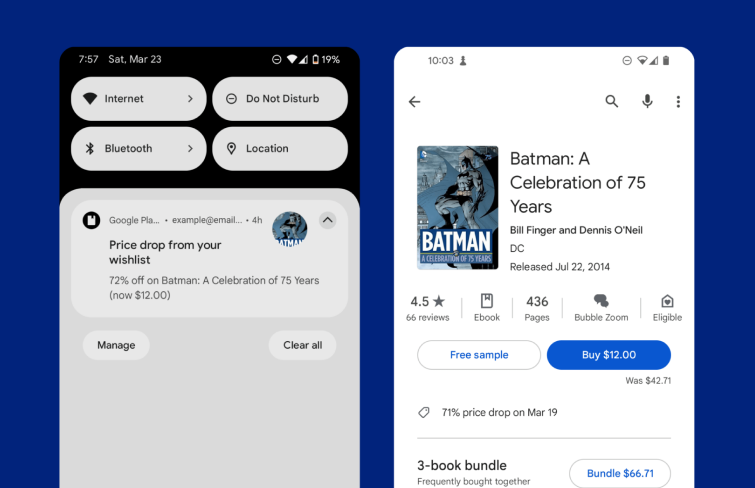
Walmart leverages users' location data to deliver personalized, dynamic content and experiences for its customers. By utilizing customer segmentation, Walmart sends geographically relevant flyers featuring weekly deals directly to users via timely push notifications. This approach ensures that customers receive promotions tailored to their current location, effectively guiding them down the shopping funnel.
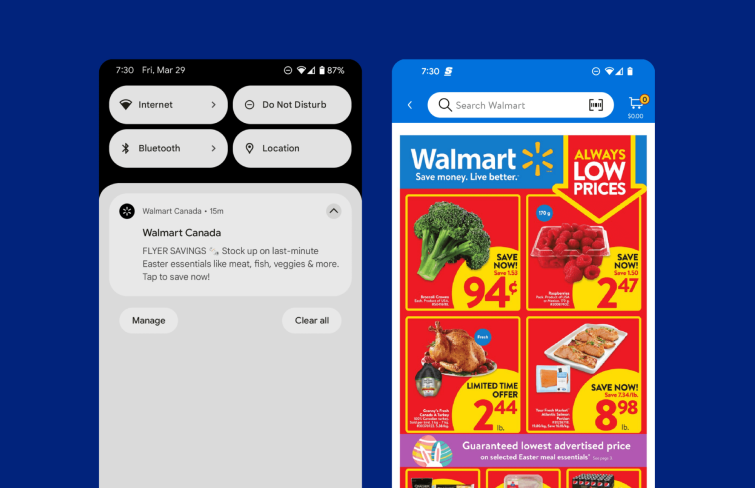
Grammarly, a cloud-based typing assistant, enhances user engagement by sending weekly usage reports that detail writing progress. Each report summarizes the number of words written, identifies common mistakes, and highlights areas for improvement. This personalized feedback not only informs users about their writing habits but also encourages them to utilize Grammarly’s features more effectively. By pinpointing frequent errors and suggesting potential enhancements, these reports empower users to refine their communication skills and make the most of the app.
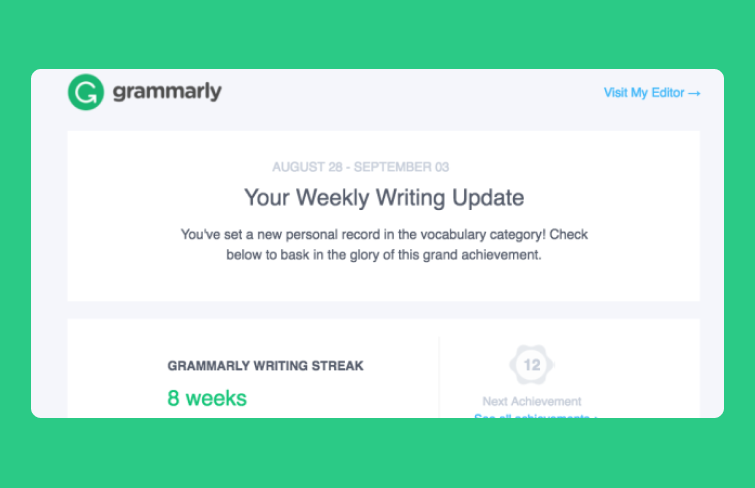
Gatorade caters to high-level athletes through its innovative Gx platform, which provides personalized sports fuel recommendations by analyzing individual sweat profiles. Users apply the Gx Sweat Patch before exercising and scan it post-workout to receive detailed insights on their sweat loss, including fluid and sodium levels. This data allows Gatorade to generate tailored recommendations for hydration and nutrition, helping athletes optimize their performance. By focusing on each athlete's unique physiology, Gatorade enhances the effectiveness of its products, ensuring that users receive the precise refueling they need to achieve their best results.
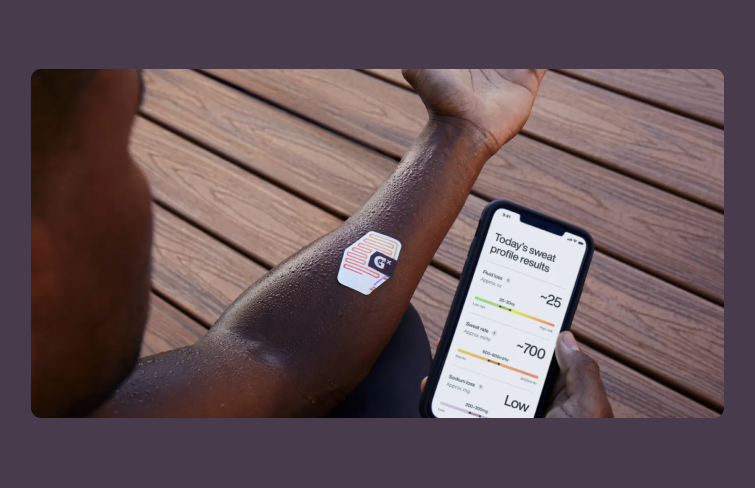
Through Nike's innovative 3D sneaker customization platform, users can design shoes tailored to their unique fit and style. Alongside this, the NikePlus loyalty program offers personalized benefits and targeted product recommendations. Members can effortlessly scan items to check availability in their preferred sizes and colors, streamlining the shopping process. Nike’s focus on personalization resonates deeply with sneaker enthusiasts, ensuring they can easily find or create the perfect products.
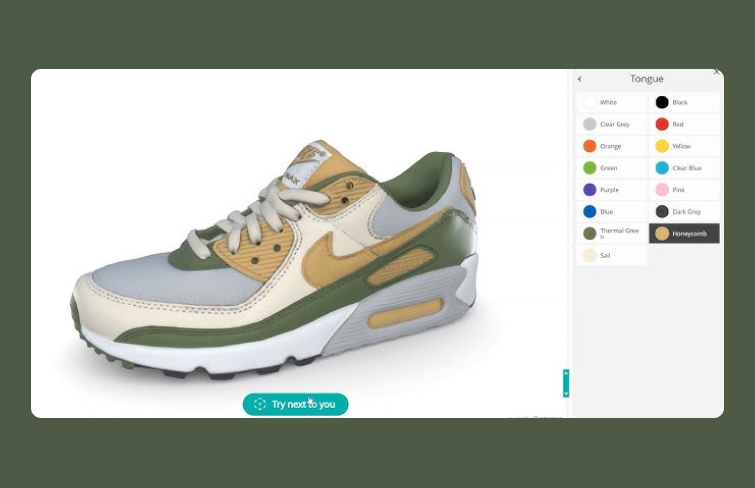
Pinterest excels in creating a personalized user experience right from the onboarding process. Upon signing up, users are prompted to declare their interests, which serves as the foundation for customizing their home feed. This initial interaction allows Pinterest to curate a tailored selection of content, ensuring that users are presented with pins that align with their personal preferences from the very start. As users interact with the content, Pinterest continuously refines its recommendations, adapting to changing interests over time.
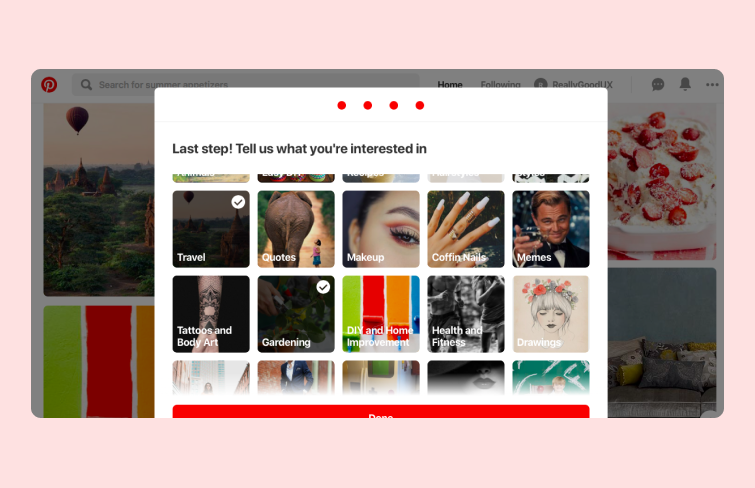
Mockplus RP is an online prototyping tool that simplifies the process of creating interactive prototypes and UI/UX flowcharts. With its ready-made shapes, components, and other design elements, you can quickly design user flows for onboarding, login, and other interactions using a simple drag-and-drop interface. Mockplus also lets you easily connect shapes with wires to showcase flow and logic. Moreover, with its powerful interactive and animation features, you can simulate real user experiences to create a seamless user journey.
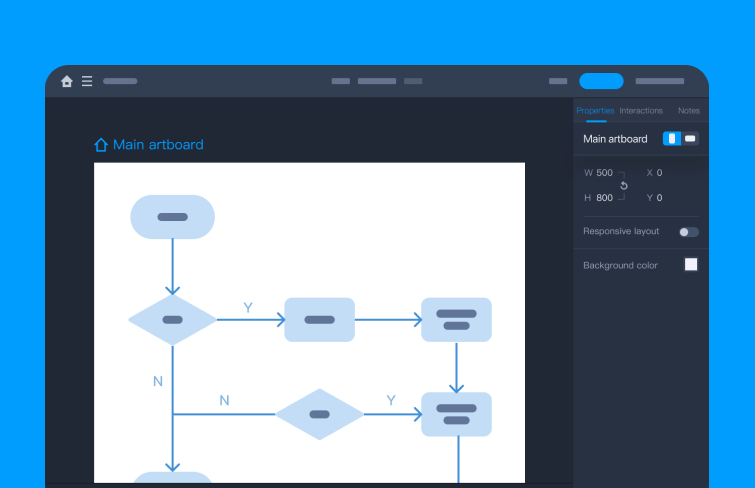
UXCam is a robust tool designed for managing app performance, enabling teams to dive deep into user experience optimization. Beyond basic metrics, it provides qualitative insights, helping product teams and developers understand the reasons behind user actions. This makes it invaluable for continuously tracking behavior, identifying pain points, and refining app interactions for a better personalized user experience.
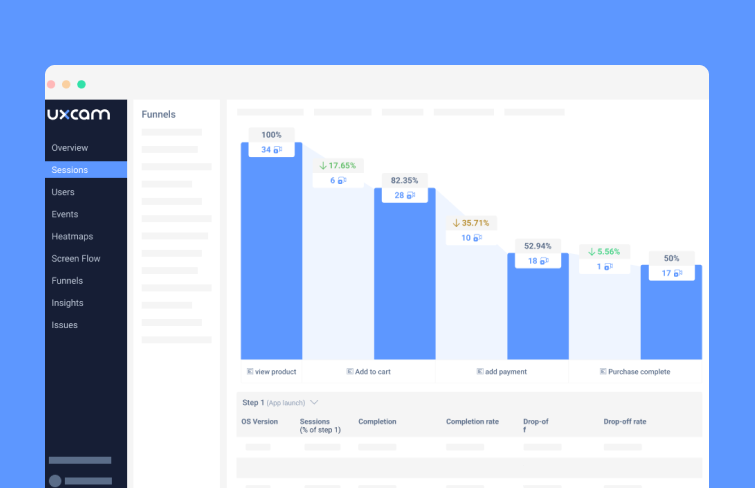
Google Analytics is a powerful web analytics tool that offers valuable insights for personalization in UX design. By tracking quantitative data such as sessions and bounce rates, it provides organized reports that help designers understand user behavior on their sites. With GA4, it also collects event-based data from both websites and apps, allowing for a comprehensive view of user interactions across platforms. Furthermore, Google Analytics seamlessly integrates with other Google Marketing Platform tools, like AdWords and Search Console, enabling designers to consolidate all relevant data in one location.
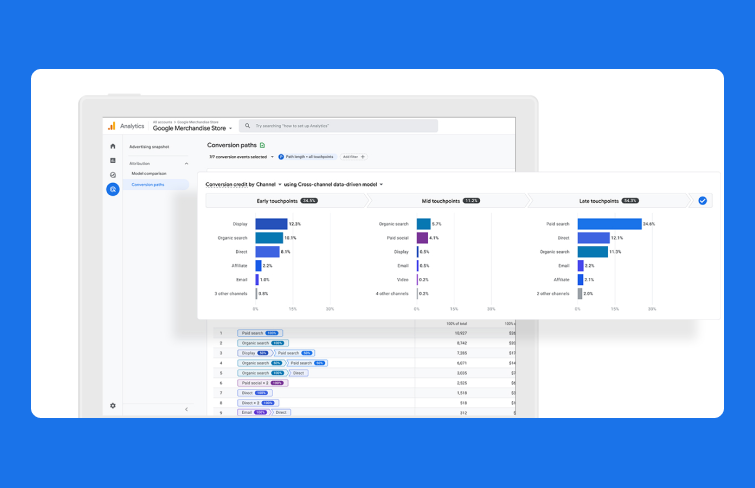
Woopra is an end-to-end customer journey analytics tool that significantly enhances personalization in UX design by tracking user interactions across your site. It provides a holistic view of every action users take, from their initial touchpoint to their ongoing engagement, allowing designers to understand how customers experience their products. By analyzing and optimizing each touchpoint, Woopra helps identify opportunities for improvement that can directly impact customer satisfaction and retention. Additionally, its automation features enable workflows through built-in triggers and integrations with other analytics tools, streamlining processes and enhancing data-driven decision-making.
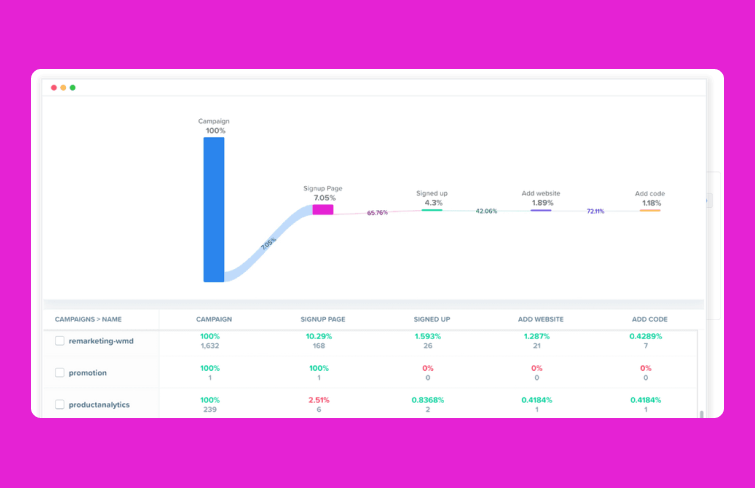
HubSpot is a comprehensive CRM platform that significantly enhances personalization in UX design by seamlessly tracking customer relationships and facilitating marketing, sales, and service processes. It caters to businesses of all sizes, providing tools like Marketing Hub, Sales Hub, Service Hub, and Content Hub, which align internal teams and generate valuable insights throughout the customer journey. By centering its features around customer experience, HubSpot empowers organizations to create tailored interactions that foster growth and satisfaction.
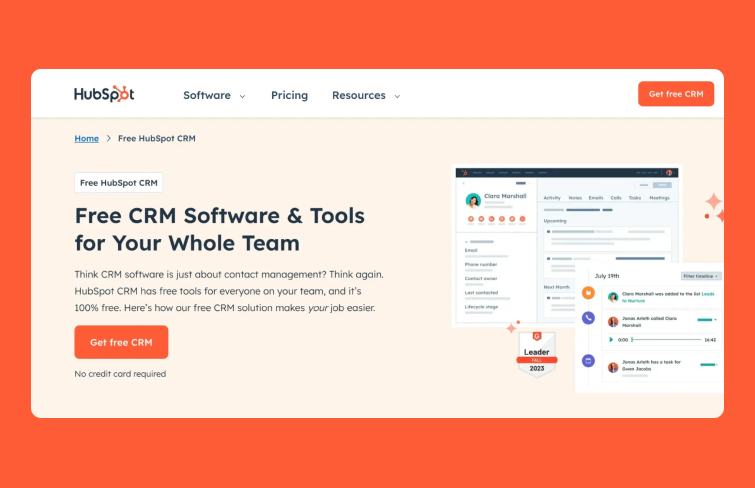
Microsoft Dynamics is a robust CRM and ERP solution designed to enhance personalization in UX design by improving sales and marketing productivity. The platform connect your teams, processes, and data across your entire org to create exceptional customer experiences and operational agility. It collects social insights and provides cloud-based campaign management, allowing businesses to tailor their marketing efforts effectively. Moreover, with options for cloud, hosted, or on-premises deployment, Microsoft Dynamics ensures flexibility in how organizations manage their customer relationships.
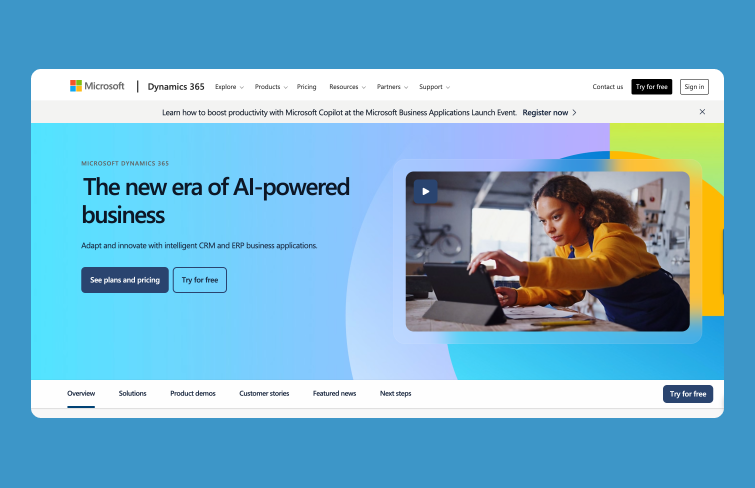
Freshworks is a powerful sales CRM and customer engagement platform that leverages AI to enhance personalization in UX design. It is divided into two main components: Sales Cloud and Marketing Cloud. The Sales Cloud aids in lead attraction, qualification, and engagement, using AI to forecast sales and suggest the best actions for sales representatives to take with prospects. Meanwhile, the Marketing Cloud enables automated conversations through an AI-powered chatbot, providing insights into audience behavior and engagement.
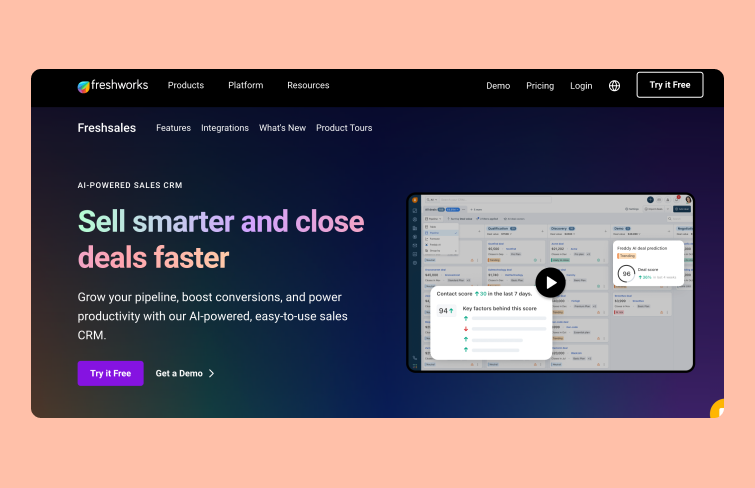
Salesforce’s CRM, Customer360, enhances personalization in UX design by consolidating customer data alongside sales, service, marketing, commerce, IT, and analytics in one accessible platform. This integration allows for quick access to shareable insights and facilitates easy collaboration across teams. Customer360 excels in lead and contact management, sales opportunity management, workflow automation, and customizable reports and dashboards, ensuring that users can tailor their approach based on individual customer needs. With additional features like Einstein AI for achieving specific goals and tools designed to enhance employee experience, Salesforce empowers organizations to create personalized customer interactions, ultimately improving satisfaction and loyalty.
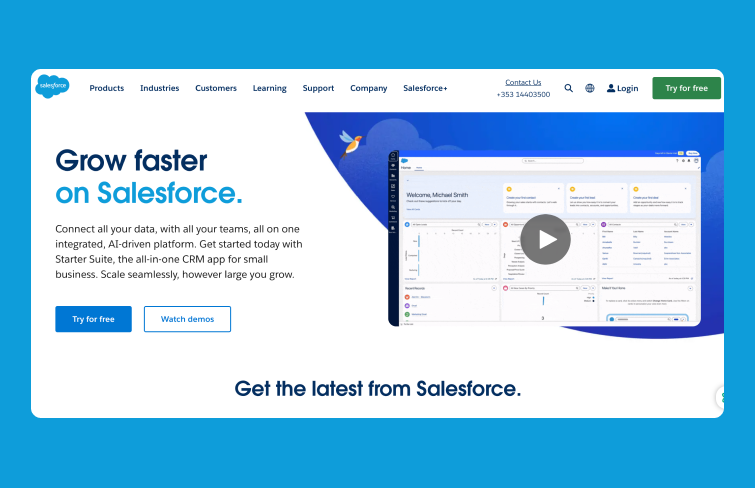
Overall, personalized experiences are a vital part of our daily interactions nowadays, profoundly enhancing how we connect with products and services. Whether it’s user-friendly dashboards filled with customizable templates, tailored emails, or content recommendations that speak to our interests, these personalized touches make us feel valued and understood.
As you explore the various examples of personalized user experiences and the best tools for achieving this, consider adopting the practices that align with your product and customer needs. By implementing these strategies, you can cultivate a more meaningful and engaging user experience that truly resonates with your audience.
 Mockplus RP
Mockplus RP
A free prototyping tool to create wireframes or interactive prototypes in minutes.
 Mockplus DT
Mockplus DT
A free UI design tool to design, animate, collaborate and handoff right in the browser.
